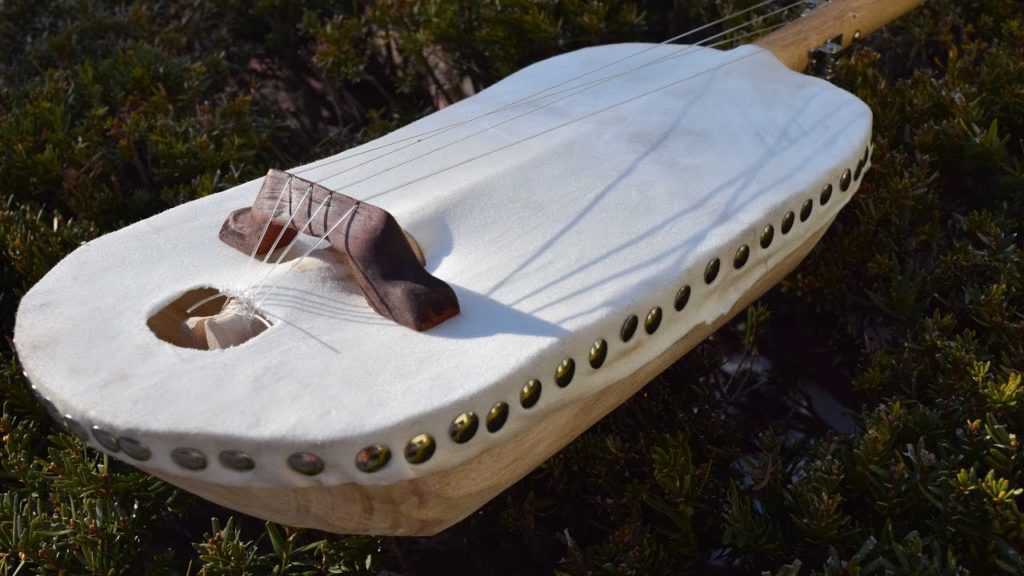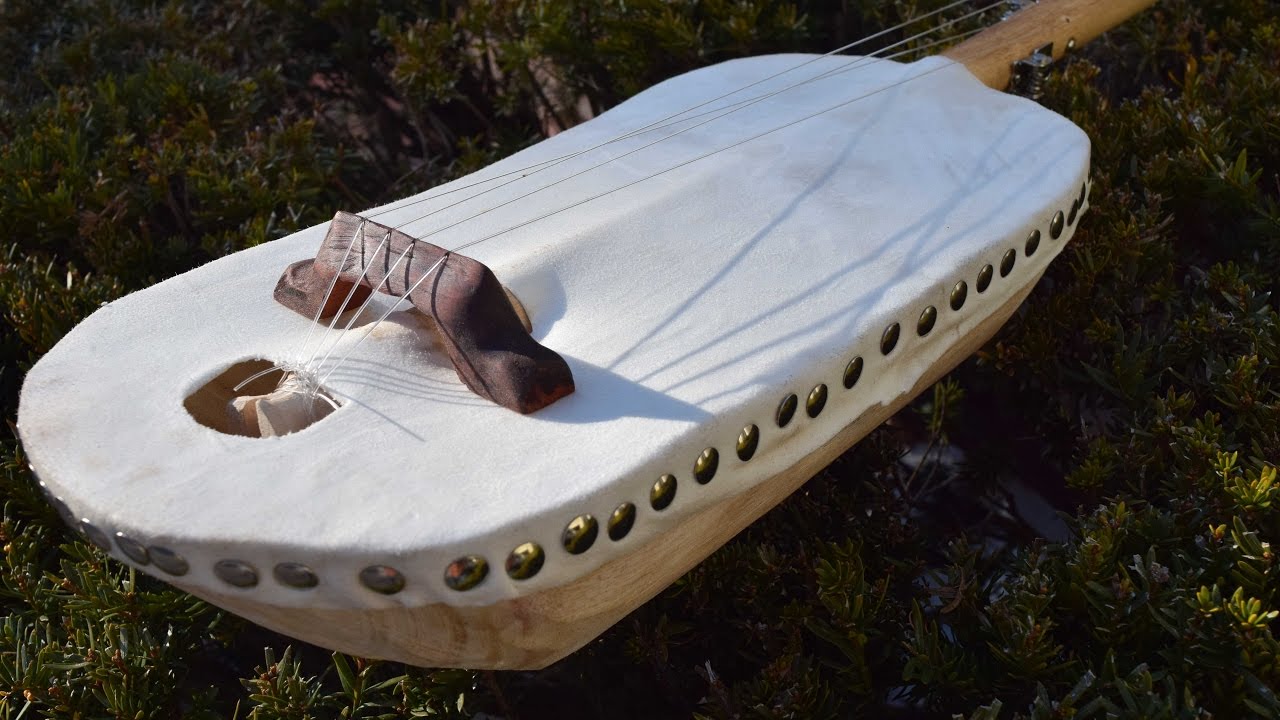Deeply rooted in the cultural fabric of West Africa, the Xalam is an enchanting musical instrument that has been captivating audiences for centuries. Often considered the ancestor of the modern-day guitar, the Xalam’s rich history and distinctive sound make it a symbol of traditional African music. In this article, we will explore the origins, construction, and significance of the Xalam, shedding light on its enduring legacy.

What is a Xalam?
Xalam Origins and History: The Xalam, also known as the ngoni or khalam, traces its origins back to ancient times. Its roots can be found in the griot tradition of West Africa, where it was used to accompany storytelling and praise-singing. This instrument holds significant cultural value, as it was an integral part of traditional ceremonies and social gatherings.
Xalam Construction and Design: The Xalam is a stringed instrument typically carved from a single piece of wood, usually from the gourd family. Its body consists of a rounded or elongated resonator covered with animal skin, while the neck is equipped with frets made from fishing line or metal wire. The number of strings can vary, but it is common to find instruments with three to seven strings.
Xalam Significance and Cultural Impact: The Xalam holds great cultural significance in West Africa. It is renowned for its soulful and captivating sound, which resonates with the essence of African music. Often played by griots, who are the traditional historians, poets, and musicians of the region, the Xalam serves as a vessel for storytelling and preserving oral traditions.
The Xalam’s influence extends beyond its traditional roots, having inspired various genres and styles across the globe. Its distinct timbre and rhythmic capabilities have made it a favorite among musicians seeking to infuse their compositions with the essence of African music. The instrument’s popularity has even spread to contemporary music, where it has been embraced by artists in diverse genres.
Preserving Tradition: In recent years, efforts have been made to preserve the art of Xalam playing and pass it on to future generations. Cultural organizations, educational institutions, and passionate individuals are working together to promote the instrument’s significance, offering lessons, workshops, and performances to keep the Xalam’s melodic legacy alive.
Xalam and the Banjo
The Xalam and the banjo share some similarities in terms of their construction and playing techniques, making them distant relatives in the realm of stringed instruments. Both instruments have a resonating body and a neck with strings that are plucked or strummed to produce sound.
Historically, the banjo is believed to have originated from West Africa and was brought to the Americas through the transatlantic slave trade. African slaves brought their musical traditions and instruments with them, and these influences contributed to the development of the banjo. It is widely believed that the banjo’s design and playing techniques were influenced by instruments such as the Xalam and other African lutes.
The banjo’s distinctive sound, often associated with American folk and bluegrass music, is characterized by its percussive and twangy tone. Similarly, the Xalam’s sound possesses a unique timbre that is recognized for its resonance and depth. While the banjo typically has a round or oval body with a skin membrane stretched over it, the Xalam’s body is also rounded or elongated, usually covered with animal skin.
Additionally, both instruments are associated with oral traditions and storytelling. Griots, the traditional West African musicians and storytellers, often played the Xalam to accompany their narratives. Similarly, banjo music has a long history of being used as a storytelling medium in American folk music, with musicians using the instrument to convey tales and cultural narratives.
It is worth noting that while the Xalam and the banjo have similarities, they have evolved in different musical contexts and have distinctive cultural identities. The banjo’s journey through the Americas has led to its integration into various musical genres, while the Xalam remains deeply rooted in West African traditions. Nonetheless, the historical and structural connections between these instruments serve as a testament to the interconnectedness of musical traditions across continents.
What is the Xalam used for?
The xalam serves multiple purposes within the cultural and musical landscape of the regions where it’s played. Here’s a breakdown of its primary uses:
1. Accompaniment for Praise Singing and Historical Recitations:
- In many areas, particularly with male griots (hereditary praise singers), the xalam acts as a solo or duo instrument.
- Skilled griots weave intricate melodies and rhythmic patterns on the xalam, providing a captivating backdrop for their praise songs and historical recitations.
- These songs often honor esteemed individuals, recount lineages, and celebrate important events, keeping the cultural memory alive.
2. Ensemble Playing:
- While sometimes used solo, the xalam can also be incorporated into larger musical ensembles.
- Depending on the region, it might be played alongside instruments like the kora (a harp-like instrument), drums, and calabashes (percussion instruments made from gourds).
- This ensemble setting creates a richer and more dynamic soundscape for weddings, social gatherings, and cultural performances.
3. Modern Music:
- The xalam’s sound isn’t confined to traditional settings. In recent times, it has found its way into contemporary music, particularly in genres like mbalax, a popular dance music style from Senegal.
- Musicians are incorporating the xalam’s unique tonal qualities and rhythmic possibilities to create innovative and exciting sounds within a modern context.
4. Folklore Ensembles and Variety Shows:
- With its ability to adapt to diverse musical styles, the xalam has become a staple in folklore ensembles that showcase the rich musical heritage of West Africa.
- It’s also not uncommon to see the xalam featured in ndaga (variety shows) in Senegal, adding its distinctive voice to a vibrant mix of musical and cultural expressions.
In essence, the xalam transcends being simply an instrument. It’s a cultural cornerstone, deeply intertwined with praise singing traditions, historical narratives, and the evolving musical landscape of West Africa. From intimate gatherings to modern stages, the xalam’s captivating sound continues to resonate, carrying the weight of history and the promise of artistic innovation.
Free Banjo Tabs
Free Online Banjo Lessons
Learn the Banjo in 24 hours
10 Punk Songs Featuring Banjo
10 Metal Songs Featuring Banjo
10 Musicals that Feature the Banjo
10 TV Shows that Feature the Banjo
Can a Monkey Play The Banjo?
What is an Akonting?

